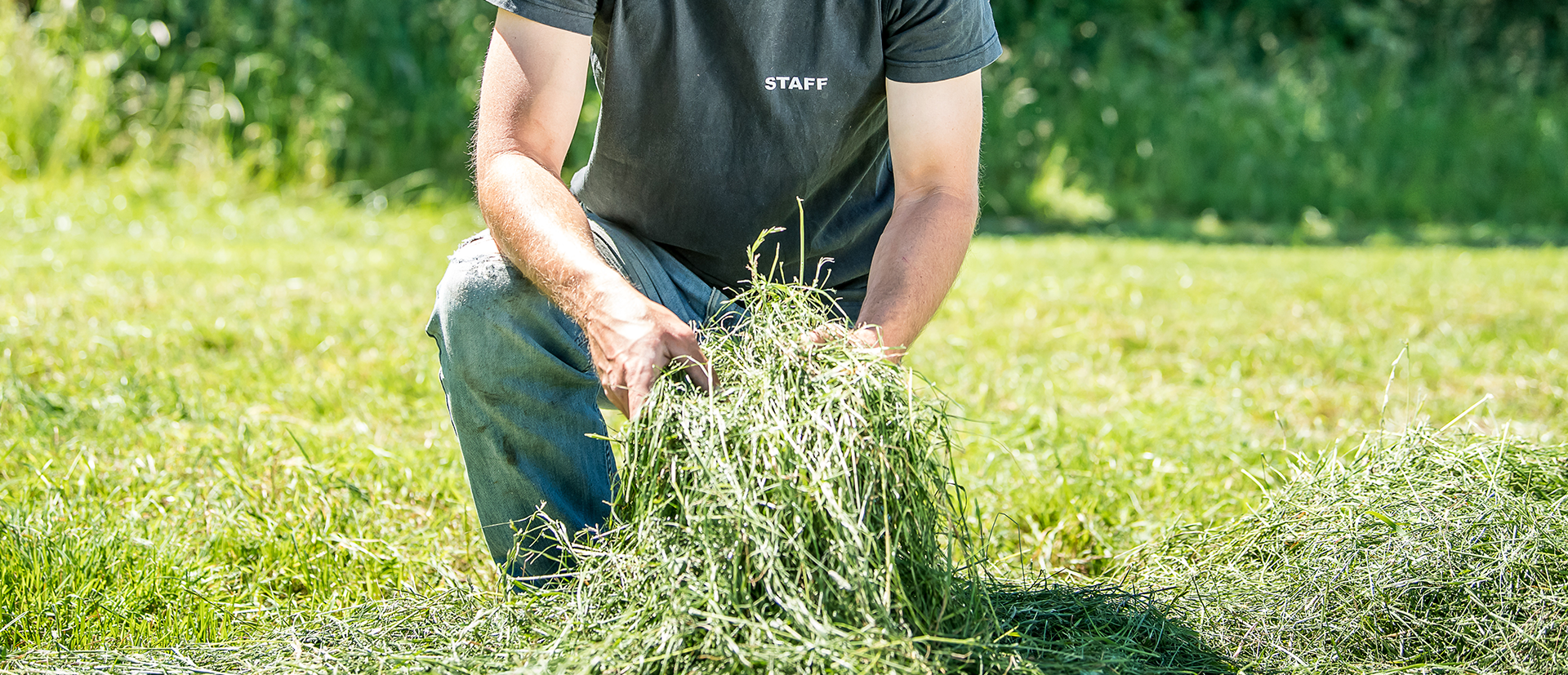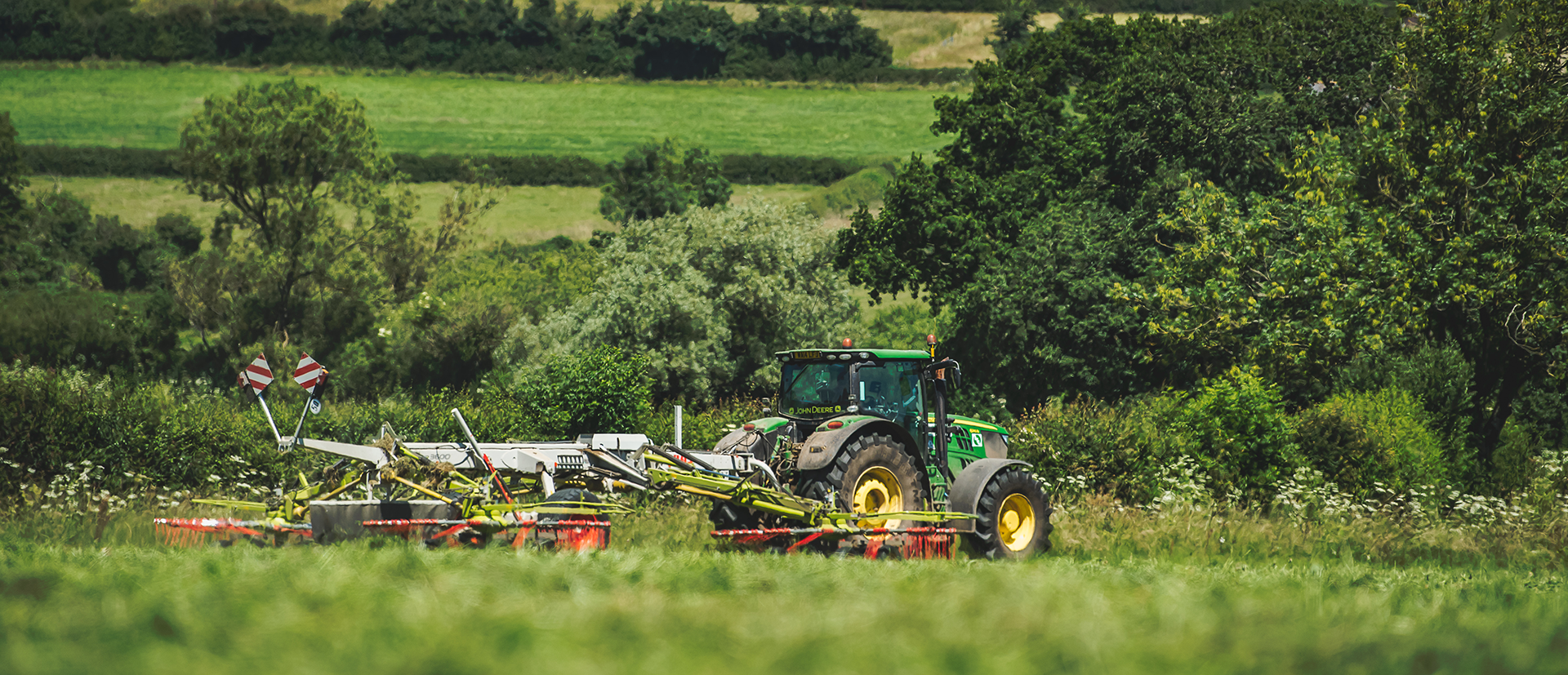Harvest is probably the busiest time of the year for farmers and getting it right is crucial. A good harvest makes the difference between having enough feed to keep the animals full up over winter and having too little. If there’s not enough in the barn after harvest, extra feed has to be bought in and no farmer’s balance sheet likes that.
The two main harvests produce silage and hay. The first cut of silage will be done in late May when the weather has warmed up, encouraging the grass to grow to a good length. A tractor and mower are used to cut the grass and a forager (a huge machine that sucks up the grass) collects it. Usually, the grass is mowed a day before the forager gathers it up to be put in the silage clamp. Good weather is essential, as, during the 24 hours between cutting and collection, the grass needs to dry slightly. Fields won’t be cut grass if rain is forecast. Letting the grass dry slightly helps to increase the sugar levels in the silage that provides plenty of energy for the cows. If the grass is too wet, it won’t store well in the silage clamp. It will also affect the quality of the silage and the cows won’t eat silage if it doesn’t taste or smell appetising.

After a field has been cut, the rows of grass are raked together to make larger combined rows. This means the forager can clear the field more quickly and efficiently. As it drives along, the forager hoovers up the grass and chops it before blowing it into the trailer being towed alongside by a tractor. Usually, a couple of tractors and trailers are on a rotation so the forage harvester can continuously pick up the grass whilst the tractors whizz back and forth to the silage clamp back at the farm.
A silage clamp is a three-sided box, with the sides normally made from concrete slabs. When all of the grass has been picked up and put into the clamp the tractors push and compress the grass to squeeze out all of the air. To do this they drive on top of the pile of grass, making it dense and compact. With the air has been removed; the pile of grass is covered with plastic sheeting and weighed down with tyres to ensure it’s sealed tightly. If air pockets are left in the grass, the silage will go off and become inedible which is a huge loss for the farmer. With the clamp sealed, the grass is left to ferment. This preserves the grass and its nutrients, making it ready to feed to the cows over winter.
After the first cut, it usually takes about six weeks before the grass is at a reasonable length to cut again for the second then third time. But with the English weather being what it is, it all depends on how dry or wet the summer is. Farmers have to be prepared to begin harvesting at a moment’s notice if they see a few dry days on the forecast.
Because of the way it’s harvested, hay is a much dryer feed than silage. The grass is cut in the same way but instead of picking it up the next day, the farmer leaves the hay on the ground to dry completely. To speed up the drying process, the tractor spreads the grass on the ground and turns it once or twice before pushing it back into rows ready for the baler. Before starting this process, it’s important to check that the weather’s going to be dry. If it rains once it’s cut, the hay will struggle to dry out and its quality will be affected if it dries slightly then gets wet and has to dry again.
The baler is pulled along behind the tractor collecting the grass up and compacting it into either round or square bales. These are stored in a barn to stay dry, ready to be fed when the weather turns cold and the grass stops growing. Usually, hay will only be cut once a year, as sufficient growth is needed to make a worthwhile number of bales.
How To Build A Campfire
A successful fire needs three elements: heat, fuel and oxygen. Getting each of these components right will help you build the perfect campfire to keep you warm while roasting your marshmallows to perfection. If you’re neither an experienced firelighter nor Bear Grylls (most of us aren’t), setting ablaze can seem an exasperating undertaking. But by following these simple steps you’ll be a master campfire builder in no time, even if you never got the scout or brownie badge.
Read More.png)


